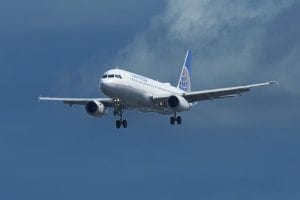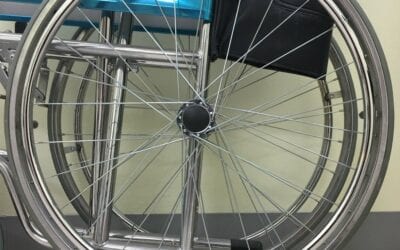The problems of pets on planes have severe consequences for others caused by passengers breaking the rules.
 Last month, a passenger was flying with her chihuahua on United Airlines. She was traveling from Denver to Portland. United’s pet rules state, “Once you’re on your flight, there’s only one rule you need to follow. Your pet must stay in their carrier with the door closed, and under your seat at all times.” She broke that primary pets-on-planes passenger rule.
Last month, a passenger was flying with her chihuahua on United Airlines. She was traveling from Denver to Portland. United’s pet rules state, “Once you’re on your flight, there’s only one rule you need to follow. Your pet must stay in their carrier with the door closed, and under your seat at all times.” She broke that primary pets-on-planes passenger rule.
The woman knew the rule. According to reports, early in the flight she told a fellow passenger, “I’m going to take him out anyway.” Once the seatbelt sign was off, according to reports, the woman took her dog out of its carrier. She put it in her lap. Soon thereafter, it pooped, soiling the seat, its armrests, etc. It caused a pungent odor in the plane’s cabin. The chihauhua’s owner apparently did nothing. A nearby passenger pressed the call button for help.
About ten minutes later, flight attendants appeared. Reportedly dressed in hazmat looking clothing, she cleaned up the mess. The flight attendant gave other passengers sanitizing wipes. Those passengers were also offered $50–$75 vouchers toward a future United Airlines flight.
The pet owner behaved outrageously. She broke United’s primary pets on planes rule.
To make matters worse, the passenger did little or nothing to clean up the mess her dog made. Its unsanitary conditions and the stench in the cabin air affected the entire plane. While the woman caused this incident, she isn’t the only pet owner who’s flaunted the rule about taking their pet out of their carrier on flights. Based on my observations over time, pets are taken out of their carriers regularly by passengers. They remain out for much or even all of their flight. More often than not, airline crews do nothing about it.
I’ve been a pet owner for years and understand that pet owners don’t want to leave them behind when they travel. I also understand that they don’t want their pets confined to a small carrier stowed under the seat for hours on their flight. But it is the rule to bring pets on planes and they are all aware of it.
The problem is that severe consequences for other passengers can be caused by passengers breaking the pet carrier rules and even when pets are left in their carriers for the flight’s duration.
What are the current rules for pets on planes in cabins?

Generally, therapy and emotional support dogs and cats, like pet dogs and cats, may be brought into planes, but only as pets. Other animals could be brought on planes in the past, but that’s not true any longer for most airlines. The dogs or cats must be confined to a pet carrier during flights. The pet carrier must be small enough to fit under the seat in front of each passenger and must remain there during the entire flight. The carrier counts as a carry-on bag. There are exceptions to these rules on a few airlines.
What’s it like to fly from a pet’s point of view?
For a pet, flying can put it under great stress. To fly, pets are taken out of their home, where they’re most familiar and comfortable. When they get to the airport and while on the plane, they are confined to a small carrier. They deal with bright lights, thousands of people, new smells, and loud noise. In the plane’s cabin, major changes in air pressure and the carrier in which they can relieve themselves. In addition, once they land at your destination with you, you’ll be leaving them alone or with strangers much of the time.
Our veterinarian has recommended to us to not take our pets with us on our journeys, unless for some reason it’s essential to take them. We’ve personally heeded that advice.
What’s it like for passengers when there are pets on planes?
If you’ve been flying long enough, you’ll remember when peanuts were served as the primary snack food with beverages on almost every plane flight across the U.S. and elsewhere. Peanuts have been almost totally eliminated from planes following numerous documented reports of passengers’ anaphylactic reactions after inhaling peanut dust in their airplanes’ cabins. The peanut dust was in the cabin air despite the substantial air filtration and exchange systems on airplanes.
The same problem exists for passengers with serious pet dander allergies. Anaphylaxis or an exacerbation of asthma from pet dander is serious at any time, anywhere, however, on a plane at high altitude, with decreased air pressure and lower oxygen levels, isolated from quick access to emergency medical care, the consequences of pet allergies can be dangerous. I note that I have a serious allergy to cats and always carry at least two Epi-Pens at all times when traveling.
I’ve yet to have to use the Epi-Pens on an airplane, but I have been forced to use other potent allergy medications on planes presumably due to cat dander. It might have been due to a cat I didn’t see on the plane, or cat dander left from a previous flight on a seat or somewhere else on a plane. According to the paper, “Pets in airplane cabins: an unnecessary allergic hazard,” by Matthew B. Stanbrook, MD PhD, et. al., published in the Canadian Medical Associations Journal,
“Pet dander remains on seats long after the pet and its owner have gone. One study identified clinically relevant concentrations of cat allergen on 100% of sampled airplane seats on domestic flights and 16% of seats on international flights.”
What should the airlines do about pets on planes? Enforce the rules.
If they do nothing else, the airlines must immediately fully enforce their pet rules without exception. Every airline must enforce the rule that pets must remain in their carriers. They should remain in carriers at all times from the time the passenger with the pet boards the plane, until they get off the plane. This will minimize the animal dander from pets getting into the atmosphere of aircraft cabins and depositing on seats and other areas of the plane.
Service dogs, with proof of proper training, should continue to be allowed to provide necessary service to their disabled owners on airplanes, with the harness, leashing rule enforced.
Aircraft that had a service dog or pet on board during a flight should be vacuumed before its next flight.

It’s time for the FAA and airlines to act on pet rules now.
(Image: United Airlines flight landing at Philadelphia International Airport. Copyright © 2024 NSL Photography. All Rights Reserved.)
READ ALSO:
Do you have exit envy? Passengers want to get off the plane first. Here’s how.
Travelers United works with aviation industry on sustainable aviation fuel
After many years working in corporate America as a chemical engineer, executive and eventually CFO of a multinational manufacturer, Ned founded a tech consulting company and later restarted NSL Photography, his photography business. Before entering the corporate world, Ned worked as a Public Health Engineer for the Philadelphia Department of Public Health. As a well known corporate, travel and wildlife photographer, Ned travels the world writing about travel and photography, as well as running photography workshops, seminars and photowalks. Visit Ned’s Photography Blog and Galleries.



